The Burnside DIY in Portland was the firestarter, the pioneers of the term ‘Do-It-Yourself’. Almost 30 years ago, one group of guys were tired of the city and the lack of skateparks in Portland. So they stopped complaining about it and started to build. Their long history inspired many around the world,
Burnisde is the reference for every skatepark builder. Hames Ellerbe just did a full documentary about the history of it. I asked him some questions about it and his experience with the locals.
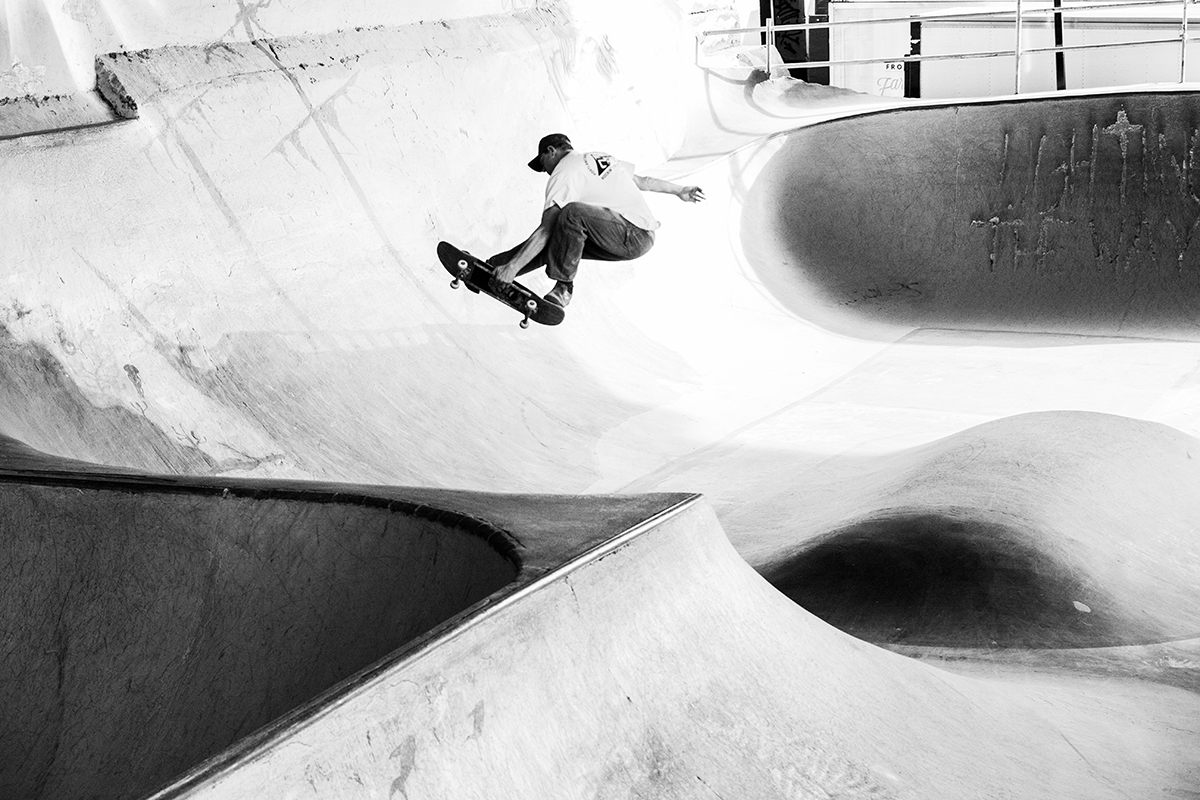 Hey Hames, first off, are you a skateboarder?
Hey Hames, first off, are you a skateboarder?
Yes, but my time has dwindled over the years as I have followed other pursuits that aligned more with mountain living. I still skate, just not daily these days.
What is your background?
I grew up in the mountains of North Carolina. We would skate around the local university, but would consistently be kicked out by university police. Without any local skateparks, we turned to snow in winter months and sometimes in the summer, with creative ice cube use.
I began to build terrain parks, for snowboarding and skiing, at our local hill in the mid to late nineties. This continued throughout my undergraduate study, a friend and I also built a little 3-foot mini ramp in my friends’ basement, for some skate sessions post snow shred.
My parents put me on snow when I was two and westward dreams of powder and big mountain lines began by the age of ten. I became enthralled in the snow lifestyle, which skating is a large influence, and innately knew my life would revolve around mountains.Following graduation, I moved to Lake Tahoe in 2005, where I worked as the Terrain Park Project and Branding Supervisor for Boreal Mountain Resort. Boreal is in the history books as an original supporter of snowboarding, and because of this we were lucky to have a 5-foot bowl with a 7-foot extension in our office.
Work days almost always ended with good buds, beer, and skate session, basically all you could ask for in your early twenties.From Boreal, I was promoted within Powdr Corp, Boreal’s parent company, to Mt Bachelor, in Central Oregon to take over all park operations in 2007, and then back down to Tahoe working for Northstar in 2012.Throughout my youth and professional career, I have been a photographer and creator of short films.
After just over ten years in the snow industry, I was thoroughly burnt out with demanding hours, but continued to shoot freelance photography filling my creative desire.This pursuit took a more serious turn in 2013 leading to, along with a desire to expand skills, my 2016 choice to pursue graduate school at the University of Oregon.
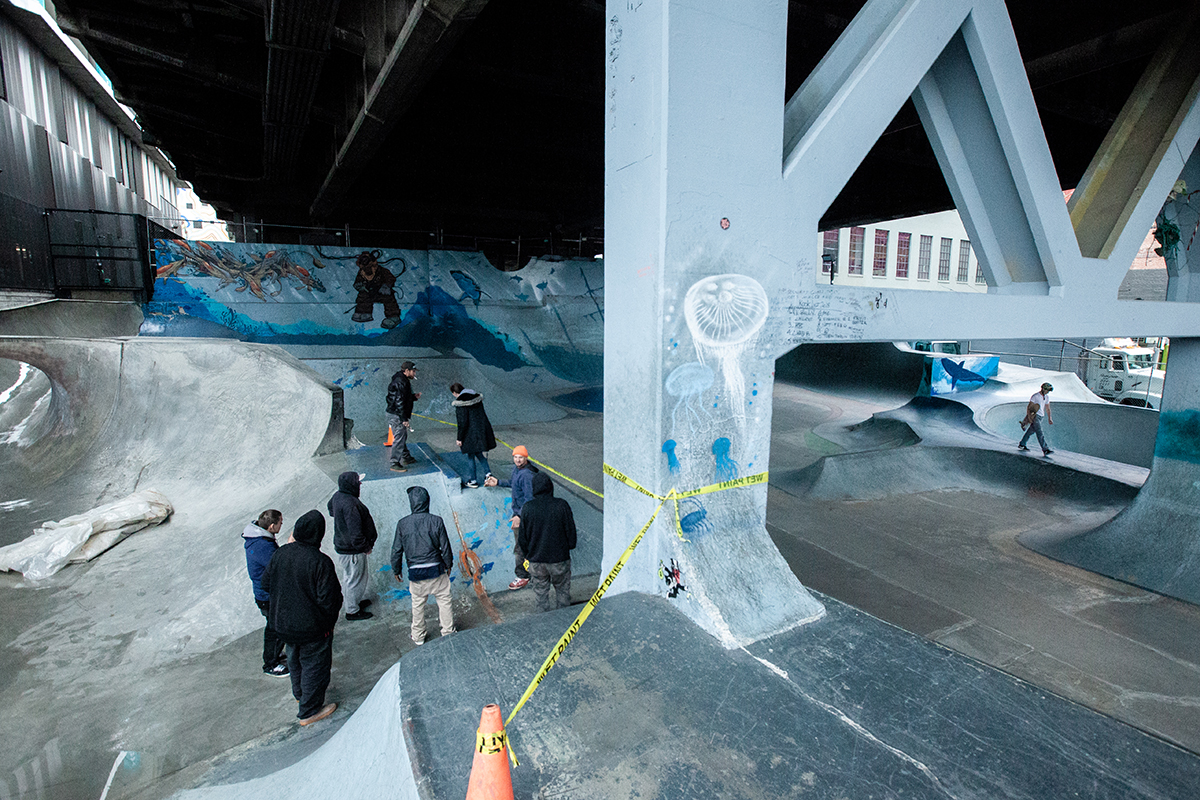
How did you hear about Burnside?
Initially, I heard about Burnside through skate vids and magazines in the mid-nineties. The first flick was Thrasher’s The Truth Hurts, which was basically like getting hit with a ton of bricks. I was just a little young for the Bones Brigade films of the eighties, so it was really the first flick that showed what was possible. Looking back on it now, it’s so raw, represented skateboarding so well, I still have a lot of punk rock in me, so I just relate easily with the earlier films.
After seeing several films featuring Burnside, I remember being really excited about the park, mainly because parks didn’t really exist back then, but also because it inspired my group to build. This inspiration came in the form of crappy homemade ramps made by 10 year olds, just super jank. We really did not try to pursue more significant building until a few years later on snow. Mainly when I began building terrain parks and throughout my career building, Burnside served as a catalyst and inspiration for building on snow. The never-ending lines and rawness, are something that constantly inspired my terrain park building. I’ll never forget the first time I saw the park.
A friend, who grew up in Portland, invited me up for a visit in the summer of 2007, and I remember asking to visit Burnside right away. We rolled up pretty early in the morning and it was unlike anything I had ever seen. It was just really awe inspiring to finally see it in person, though coming from the country I was slightly sketched out to skate, as some people were sleeping throughout the park. Hell, I could even now know some of the people that were sleeping then, I was just really naïve regarding anything city at the time.
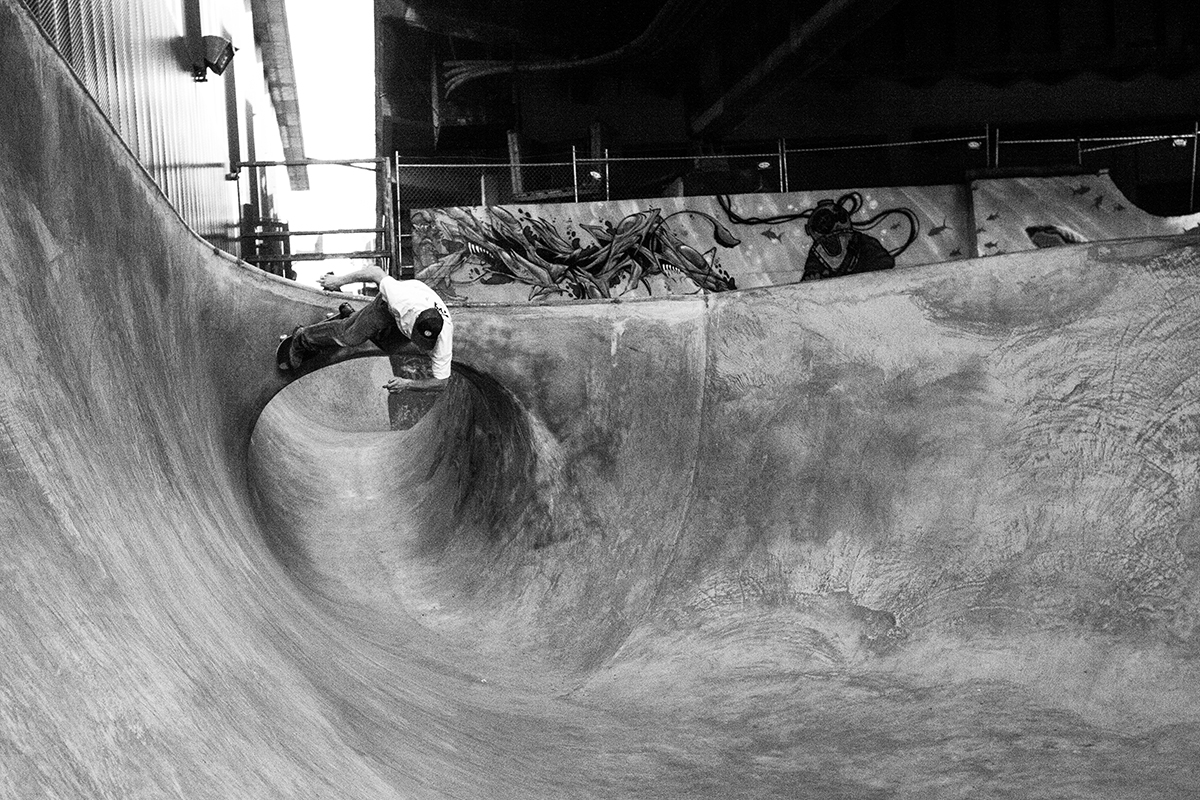
How did the idea come about to do a documentary?
The first paper I wrote in graduate school was about Skate Lab and the Skateboarding Hall of Fame in Southern California. Additionally, every additional paper revolved around skateboarding, which led to a field guide on Portland skateparks, and wanting research culture in skateboarding.
Knowing I had to narrow the research, I thought of Burnside’s uniqueness and legendary status. I did not fully know the history, I just knew some guys began building without any permission and that they created something special. After diving into the project, I really wanted to pay respect to what they have achieved and open that achievement to a broader audience. Often, I have found myself trying to justify pursuits that have a significant impact on my life to the masses, and with this I found it the perfect subject matter. Skateboarding and in particular Burnside has influenced and had a profound and immensely positive impact on those involved, in many cases guiding directions in life.
We shouldn’t have to justify their affirmative significance, just as Burnside shouldn’t have to keep fighting for its’ existence. Seeing the character and conflict involved just shows a story that needs to be told.
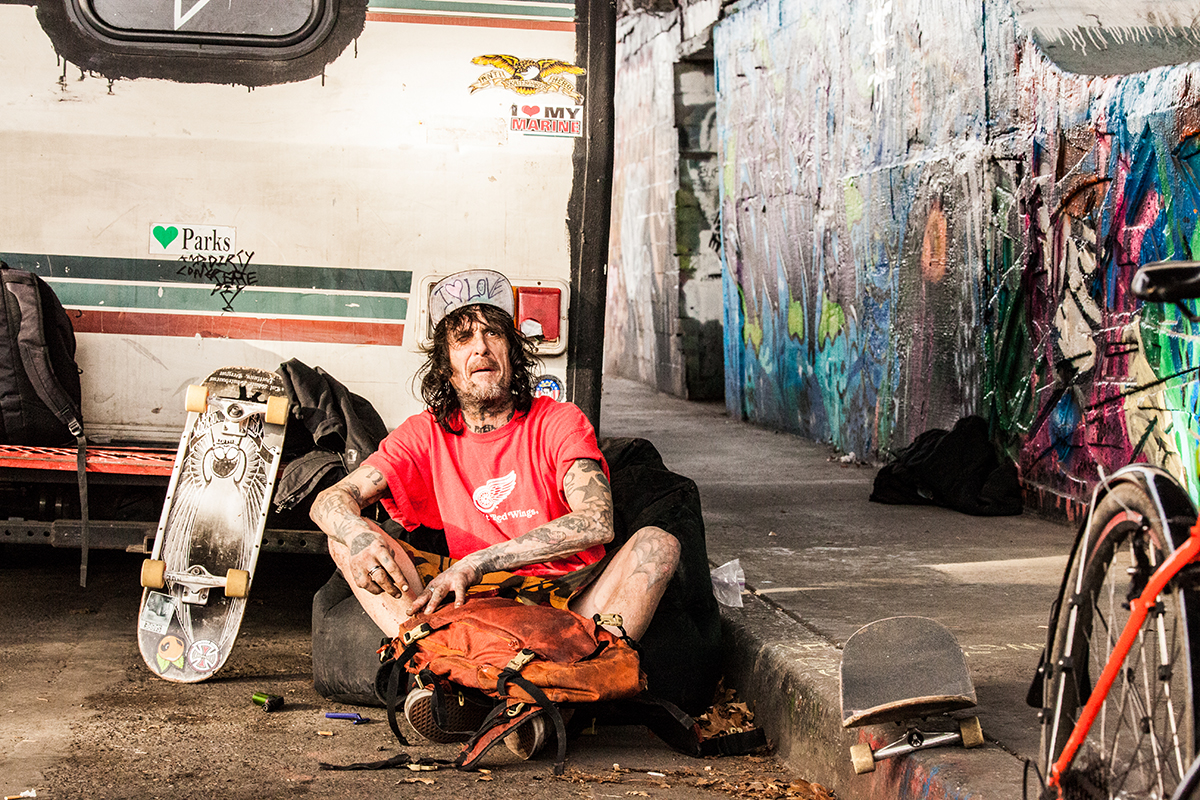
Burnside locals are known to not be friendly with everyone, how did you get their trust?
Meeting Mickey Reyes through a mutual friend, when Mickey opened up his bar in Portland, turned out to be extremely fortunate. The bar became one of my favorites and after hanging with him a few times there and knowing his endless skate community connections, I approached him explaining the research project.
I knew Mark Scott and Sage were the keys to my research, and Mickey emphasized this as well. Unfortunately, throughout the process Mark was building parks in China and Virginia, so I was unable to speak with him.
Mickey put me in touch with Sage, and following a couple chats over beers, he became stoked on the project. He, along with a photographer friend Tal Roberts, were instrumental in guiding me in the right direction of whom to speak to regarding the project. Sage really helped in gaining everyone’s trust, but also like Cardiel said “once you apply yourself, you’ll feel welcome”.
I found everyone to be extremely friendly under the bridge, especially when you are respectful. Like minds resonate with one another and I think they just recognized a like-minded individual. During this project, with all of the time spent under the bridge, I never witnessed any animosity or unfriendliness, but if you’re a kook, just as with anywhere as a kook, things may get a bit weird. Burnside handles well whatever comes.
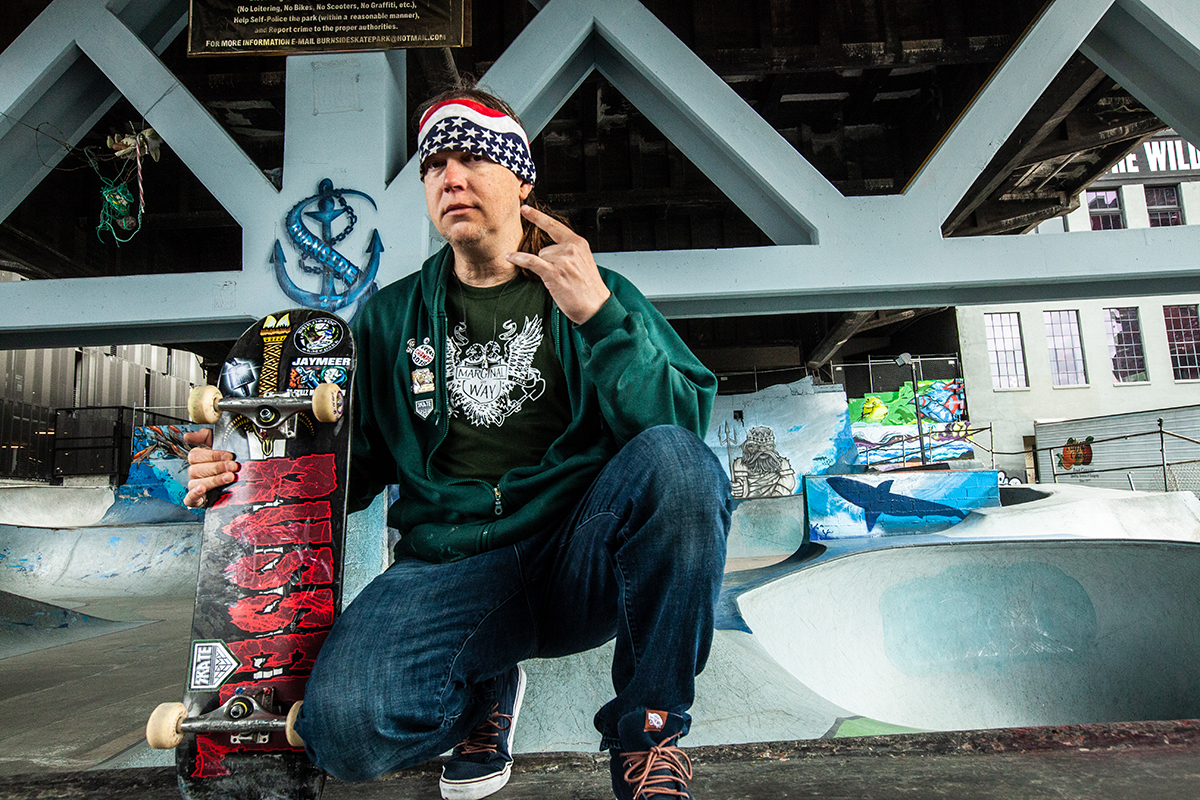
Were the locals over your shoulder for approbations?
Everyone was extremely helpful and stoked on the project. Being a Master’s thesis they had to verbally agree (over the phone) or sign a waiver, which basically says that no harm will come from the project.
I have a lot of respect for the park and what they have achieved, and I believe this came through in the interviews. Having Sage on board was extremely helpful. He explained to everyone that the project was for the good of the park.
How much time did it take for you to make it happen?
I began my research proposal in September of 2017, which is 50 pages of my intentions, framework, and any related existing research. Once I received I.R.B (Internal Review Board) approval, which is a board that determines safety with academic research involving human subjects, in December, I began the search for connections and interviews.
I had interviews completed in late March and basically spent a month to a month and a half of fourteen hour days editing. I went through 5 drafts before the finalized version. I also had to write 25 pages, which took a week, plus multiple revisions. The paper mainly covered my process during the project.
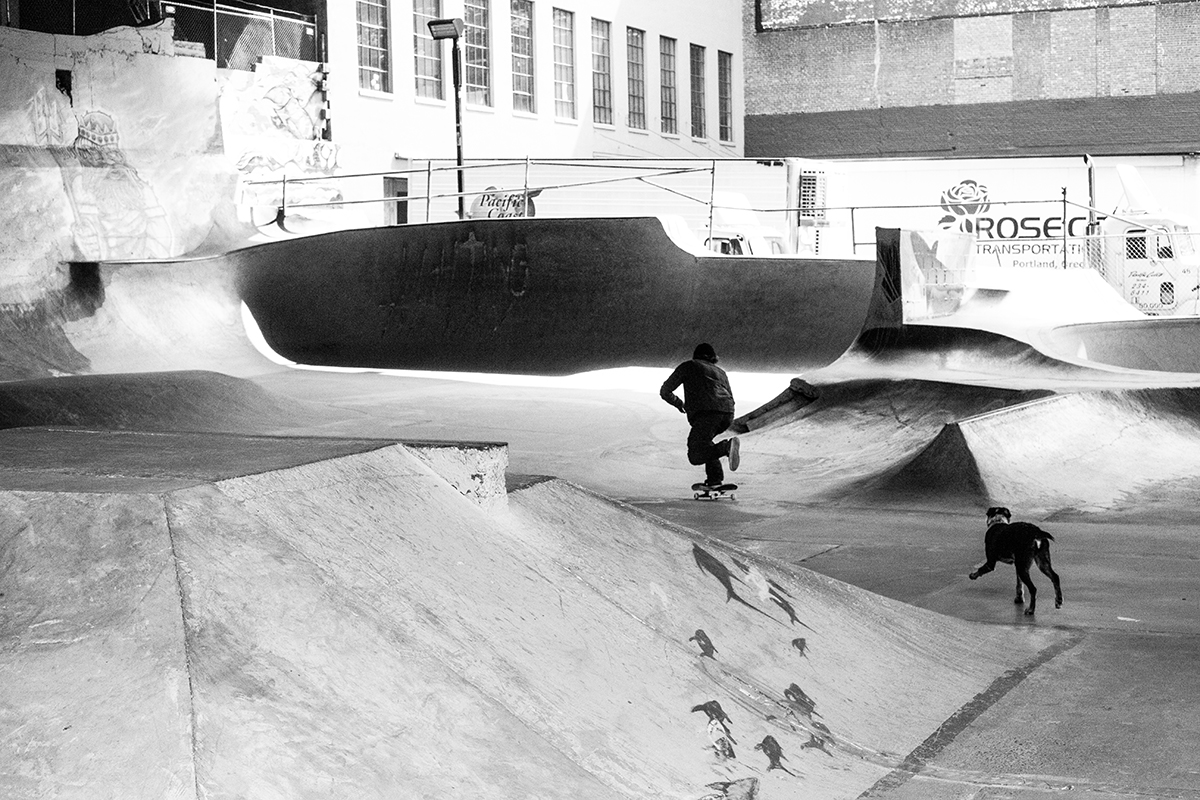
What was your modus operandi for it?
The MO would be to show respect, be authentic, and just do right by the park. I would begin an interview with asking how the interviewee began skateboarding, which would create a comfort and dialogue. Beginning interviews with a more personal question shows care about learning individual history, which I am all about, and translate into a more fluid interview, where a conversation is taking place, rather than question answer.
I find you receive more authentic and unforced answers, as well as creating a personal bond. I am fortunate that many of these conversations led to friendships. Throughout the interviews I would set markers on my H4N during key points. This allow for quicker audio sorting. I purposely did not film the interviews due to time restraints and interview locations, which I believe would have added an interesting dynamic to the finished product. I had a vision for the interviews if I had filmed them, but the vision was far out of reach for my limited budget.
I had created a storyboard to guide filming and archival footage needs. Filming and photography is something I could spend every day doing at the bridge. The light, while limited, creates a dramatic scene, and with the level of skating, shooting is just fun, but permission is needed to shoot. Going back to respect, be respectful when you shoot. Filtering footage, was dictated by the story line, and commentary.
I narrow to A and B roll and fill as needed. There are numerous shots, stories, and audio clips I did not include that would are great and more in depth, should I be able to find funding for a feature length documentary.
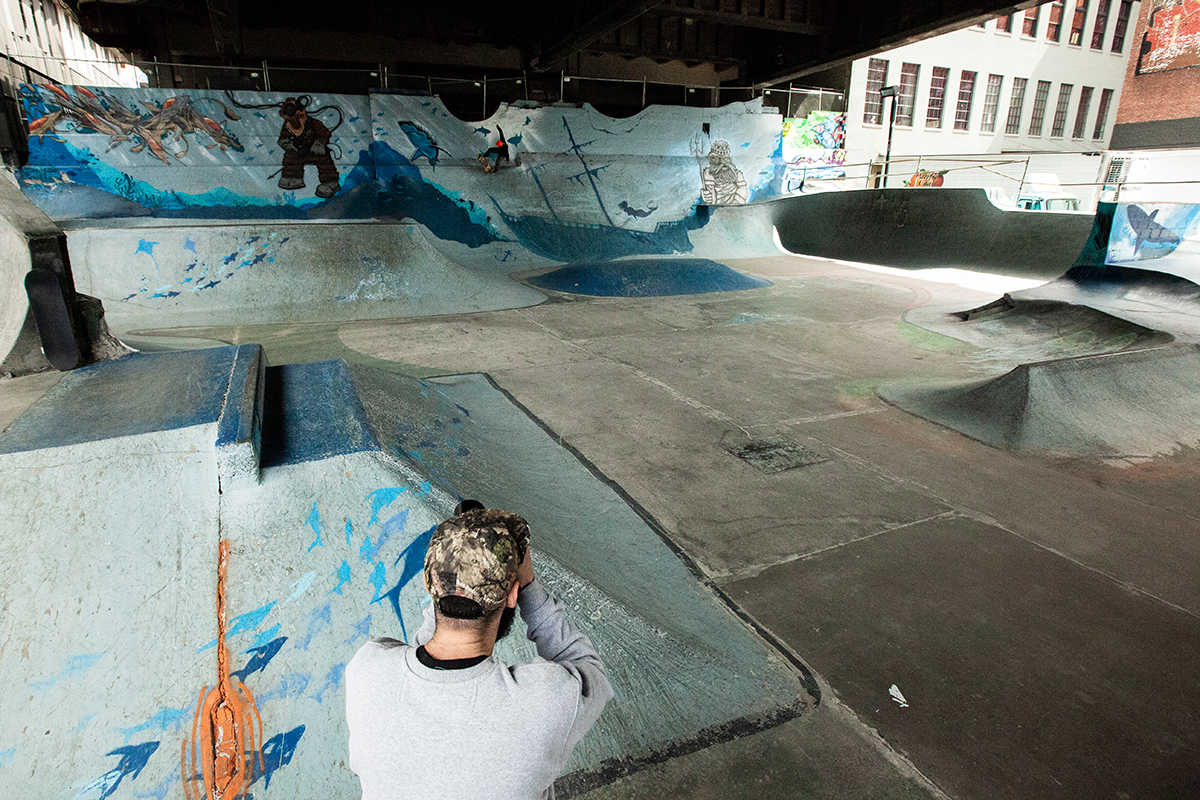
There is a lot of archives, how did you manage to get it from the locals?
They guided me in the direction to look. I looked, inquired, and gave credit, but it’s for the good of the park, no one is making money, so in the words of Sage, “it’s a no brainer”.
Why was it important to have John Cardiel talk about it?
Why not! It’s Cardiel. I wanted to include a professional skater’s perspective. Feeling that this would provide an insight from someone who knows that park, but doesn’t have the time and the same proximity as the builders.

Sage initially suggested Cards, and I was blown away by the prospect of his inclusion. Once I met him, I found he was perfect for the interview. I knew his history skating the park and his reputation of positivity, but diving into how much of an impact the bridge has on him is profound. He has spent a lot of time at the bridge and pioneered a lot of heavy lines. He is just a great guy, legendary figure, and I couldn’t think of any pro better to speak on the subject. He is the man. All Hail Cardiel.
Socially_Infamous from Hames Ellerbe on Vimeo.
How important is the Burnside DIY for Portland?
It’s almost a monument for Portland. It sums up a lot of what Portland is, what the city strives for, and what it hopes citizens will do. Burnside attracts tourists and by-standers to just check it out and watch people skate. The park is even listed as an amenity for Yard, the massive recent construction right beside the park. A burger joint in Yard also based its décor off on Burnside. Burnside represents the city, and while it is rough around the edges, that is what I like most and part of what makes it so special and unique.
They have created their own community, their own little slice of urban heaven, one that is significant enough to draw people in from all over the world. The bridge ranks with the rose garden or Pittock Mansion in importance regarding Portland, not to even to mention the skateboarding itself. It’s historical in every aspect, and brings people together creating a comradery not often found in any pursuit. Burnside betters the surrounding community, they have chased out crime, and while doing so have faced and overcome amazing odds.
They have had guns, knives, needles, and all sorts of crazy thrown at them, and yet the park and those involved have persevered. If people in Portland, or the skate community, do not know about the park they should educate themselves, because the story, what it stands for, and the love put into the park are an inspirational blueprint for anything. It teaches you to persevere no matter the odds and hurdles. Once you know the history, how can you not romanticize the park? It exists not only in legend, but in the present, so grab a case and take it down to the boys in thanks for making lives better.

Interview by Babas Levrai / Photography by Hames Ellerbe
Follow us:
Facebook/ Instagram: @loveskatemag
You can follow Hames on instagram: @hamesellerbe
Leave a Reply